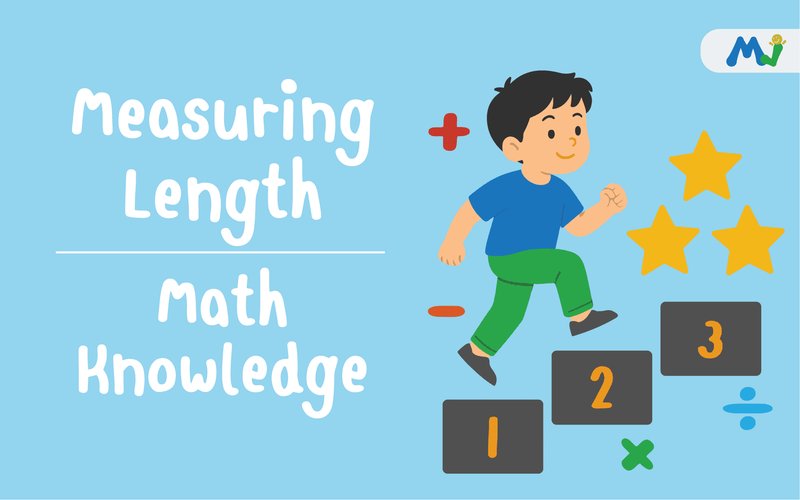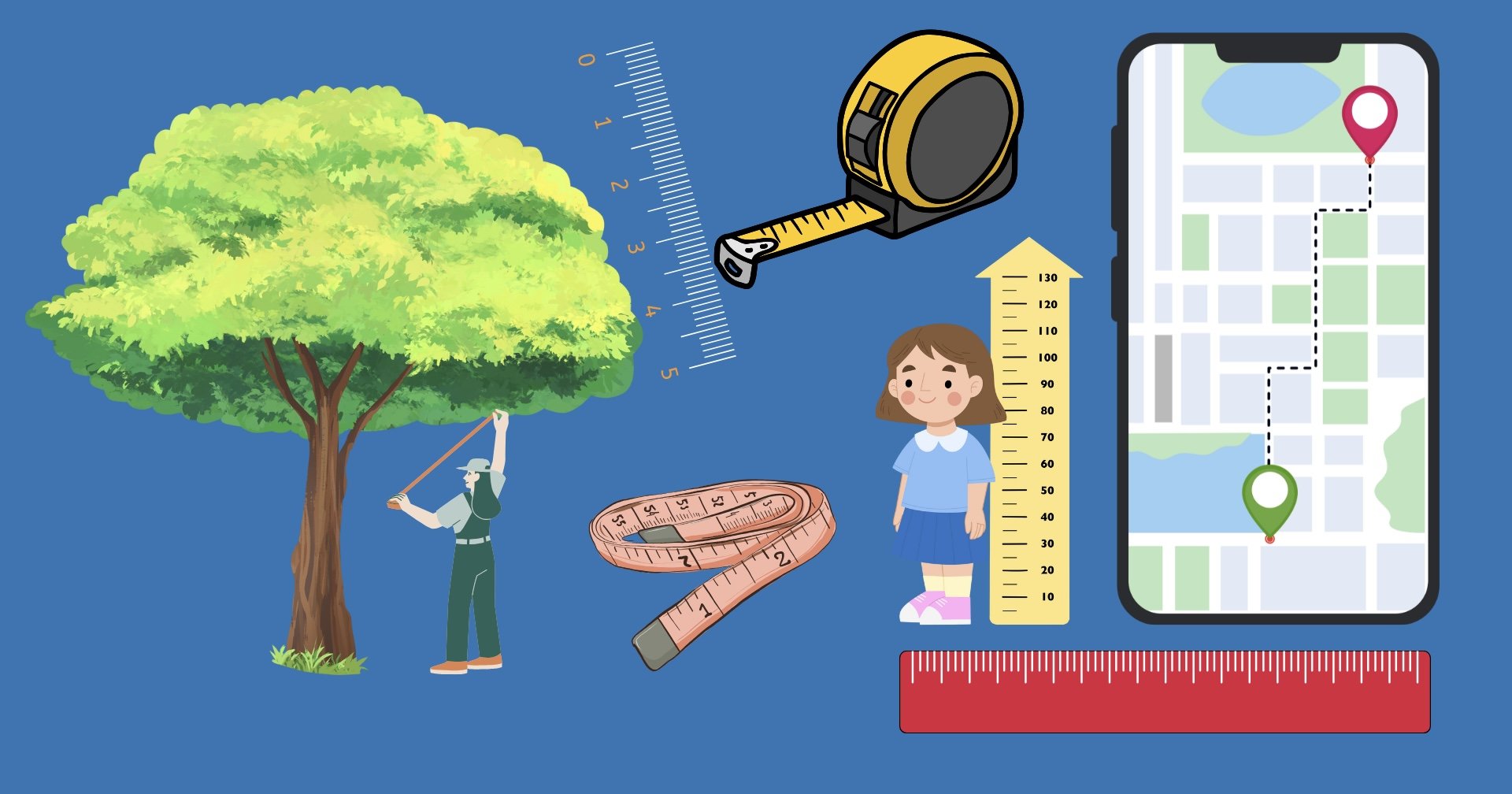

Measuring length is a key foundation in elementary school mathematics and is often used in learning primary math because it helps students easily compare objects around them. This lesson is suitable for students studying Math in Grade 3, Semester 2 who want a summary to prepare for exams.
Noey: "Hey, Sung, did you know that the tree at my house is as tall as our school building!"
Sung: "Really? Are you exaggerating? How can we know for sure?"
If we just want to tell a friend how big something at home is, but we can’t bring it to school, what should we do? The answer is measuring length. Measurement allows us to compare things clearly, even without seeing them in person. Just like how we all share a spoken language, measurement is the “language” used to describe the size of things.
When measuring length, we should know how to use measurement units, arranged from the smallest to the largest:
Millimeter (mm) < Centimeter (cm) < Meter (m) < Kilometer (km)
The relationship between each unit is as follows:
| 1 Kilometer | = 1,000 Meters |
| 1 Meter | = 100 Centimeters |
| 1 Centimeter | = 10 Millimeters |
Once we know the relationship between each unit of length, we can convert from one unit to another whenever needed. For example:
Before actually measuring an object, we should practice estimating length so we can select the right tool to measure accurately. For example:
Then, choosing the tool for measurement depends on the object being measured. If the object is small, use a tool with a smaller unit scale. If it is large, use a tool with larger unit scales. For example:

Lengths in different units can always be compared by converting them into the same unit. If the units are already the same, we can compare directly. For example:
When calculating with lengths, whether adding or subtracting, we must first convert to the same unit (e.g., all to centimeters or all to meters). For multiplication and division, we can calculate directly while keeping the unit the same.
Example of Addition:
Example of Subtraction:
Example of Multiplication:
Example of Division:
Measuring length is one of the most important math basics because it helps children apply mathematics in real life—both in school and at home. Examples include:
If children practice using millimeters, centimeters, meters, and kilometers correctly, measuring and calculating become much easier. This also builds a strong foundation for elementary mathematics learning and prepares them for more advanced math with confidence.
✨ At MJ, we provide free elementary math lessons suitable for all primary school levels. Want to learn more? MJ also offers Personalized Courses designed to help your child truly improve in math 🚀 Contact us today!
Discover P.3 Term 2 Math Curriculum with free lessons, expert support, and practice exercises designed to build confidence and mastery in math.